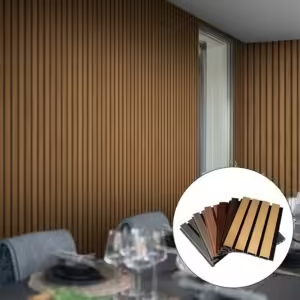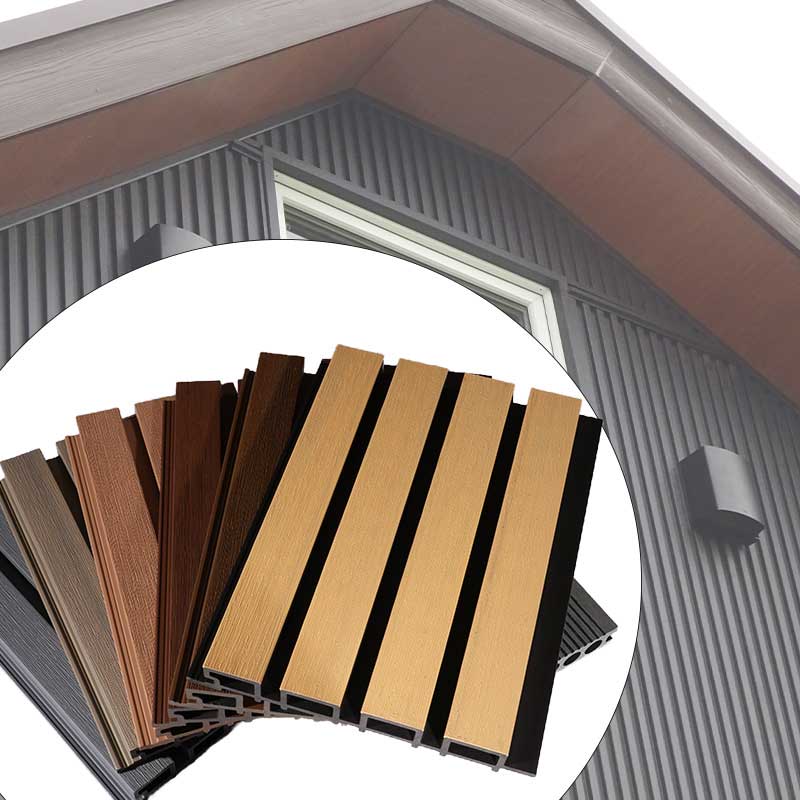Welcome to My Blog! 🌟
Before we dive into the content, let’s stay connected! Join me on my social media platforms where I share exclusive insights, engage with our amazing community, and post regular updates. Here’s how you can connect with me:
📘 Facebook: Follow Me on Facebook
Now, let’s embark on this journey together. I hope you find the content here insightful, engaging, and most importantly, valuable. Let’s explore, learn, and grow together! 🚀
Feel free to share your thoughts and feedback in the comments or on my social media—I’d love to hear from you! 😊
Table of Contents
Introduction

Are you thinking about upgrading your interior or exterior walls but aren’t sure what material to choose? If you’re looking for a versatile, durable, and stylish solution, WPC wall paneling might be exactly what your space needs. WPC, or Wood-Plastic Composite, is becoming increasingly popular in both residential and commercial settings thanks to its long-lasting performance and aesthetic appeal.
This blog will help you identify whether it’s time to make the switch. By recognizing these five key signs, you can determine whether WPC wall paneling is the ideal choice for your property. We’ll also explore its advantages, provide a comparison table, and answer common questions to help guide your decision.
Sign 1: Your Walls Suffer from Moisture or Mold
One of the most obvious signs that you need WPC wall paneling is when your walls show persistent moisture damage. Traditional materials such as painted drywall, plywood, or natural wood tend to absorb humidity, especially in high-moisture environments like bathrooms, kitchens, and basements. This absorption often leads to problems like mold growth, unsightly stains, and even wood rot, which compromise both aesthetics and structural integrity.
Unlike these materials, WPC wall paneling provides a waterproof and non-porous surface that effectively resists mold, mildew, and water damage. It creates a protective barrier that prevents moisture infiltration and reduces the risk of bacterial growth, making it ideal for any moisture-prone area. If you’ve repeatedly repainted or replaced damaged panels without lasting results, switching to WPC wall paneling can offer a permanent, worry-free solution that keeps your walls dry and healthy.
Sign 2: Frequent Wall Repairs Are Draining Your Budget

Do you find yourself constantly patching holes, repainting scuffed areas, or replacing cracked and dented wall sections? Traditional wall surfaces, especially those made of drywall, plaster, or low-quality wood panels, are vulnerable to everyday wear and tear. Common causes include accidental bumps from furniture, pets scratching, heavy foot traffic near hallways, and even minor impacts during moving or renovation activities. Over time, these damages accumulate, not only ruining the appearance of your walls but also requiring ongoing repairs that can quickly add up in terms of cost and effort.
WPC wall paneling, made from a durable wood-plastic composite, is engineered specifically to withstand such physical abuse. Its tough, impact-resistant structure prevents dents, scratches, and cracks that plague conventional wall materials. Unlike paint or thin wood veneers that chip or peel, WPC retains a smooth and attractive finish even under heavy use. This durability translates to far fewer repairs, reducing the need for costly patching, repainting, or panel replacement.
Although the upfront cost of installing WPC wall paneling may be higher than traditional options, the long-term savings in maintenance and repair make it a wise investment, especially for busy households, commercial spaces, or areas prone to damage. By choosing WPC, you protect your walls from everyday hazards while saving time, money, and the inconvenience of repeated fixes.
Sign 3: You Want a Modern Aesthetic Without the Hassle
If you’re looking to update your interior design with a fresh, modern look, WPC wall paneling offers an impressive variety of textures, colors, and finishes that replicate natural materials like wood, stone, or concrete. This versatility allows you to achieve a stylish, sophisticated appearance without the high cost or maintenance challenges associated with real wood or stone.
Moreover, WPC’s surface finish is resistant to fading, staining, and scratches, so your walls stay beautiful longer without frequent touch-ups. Installation is typically straightforward, and the panels require minimal ongoing care, unlike natural materials that need regular sealing or polishing. For those wanting to redesign their spaces with contemporary flair but without the hassle of complicated maintenance, WPC wall paneling presents an ideal combination of aesthetics and practicality.
Sign 4: You’re Concerned About Environmental Impact
As sustainability becomes a crucial consideration in building and renovation, many homeowners and builders are actively seeking eco-friendly materials that reduce environmental harm. WPC wall paneling fits well within this green building movement due to its composition and manufacturing process. It is produced using recycled wood fibers combined with plastic polymers, which helps divert significant amounts of waste from landfills. By utilizing recycled materials, WPC reduces the demand for virgin timber harvesting, thereby helping to preserve natural forests and biodiversity.
Choosing WPC supports circular economy principles by giving new life to materials that might otherwise be discarded. Additionally, the long-lasting nature of WPC panels means fewer replacements over the lifespan of your project, which translates to less resource consumption, less manufacturing energy, and reduced waste production. This durable longevity ensures that the environmental benefits are compounded over time.
Importantly, WPC’s sustainable qualities do not come at the expense of performance or style. It maintains excellent durability, moisture resistance, and aesthetic appeal, making it a responsible choice that meets both environmental and functional needs. For eco-conscious consumers, incorporating WPC wall paneling into your home or commercial space is a proactive way to minimize your carbon footprint while enjoying modern, attractive wall solutions. This material enables you to make design decisions aligned with environmentally responsible practices without compromising on quality or beauty.
Sign 5: You Need Versatility for Indoor and Outdoor Use

Unlike many traditional wall materials that are suited only for indoor use, WPC wall paneling offers exceptional versatility. It withstands outdoor elements such as harsh weather, UV rays, temperature fluctuations, and humidity without warping, cracking, or fading. This durability makes it perfect for balconies, facades, patios, and other exterior applications, as well as for indoor hallways, living rooms, and kitchens.
If you want a cohesive design that seamlessly connects your indoor spaces with outdoor areas, WPC wall paneling lets you achieve consistent aesthetics without worrying about material incompatibility or damage. Its ability to handle both indoor and outdoor environments with equal resilience means you can rely on WPC to enhance the beauty and functionality of your entire property.
WPC Wall Paneling Comparison Table
| Feature | WPC Wall Paneling | Painted Drywall | Natural Wood | PVC Panels |
|---|---|---|---|---|
| Moisture Resistance | Excellent | Poor | Fair | Good |
| Maintenance Requirements | Low | High | High | Medium |
| Aesthetic Variety | High | Low | Medium | Medium |
| Environmental Sustainability | High | Medium | Low | Low |
| Indoor and Outdoor Use | Yes | No | Limited | Yes |
Conclusion
If you’ve experienced any of these five signs, it’s a strong indication that WPC wall paneling could be the upgrade your space needs. From combating moisture issues to reducing maintenance and enhancing visual appeal, WPC wall panels offer a smart, long-lasting solution.
With benefits like durability, eco-friendliness, and aesthetic flexibility, making the switch can improve both the function and style of your environment. Evaluate your current wall conditions and consider how WPC wall paneling can meet your needs better than traditional alternatives.
FAQ
Q1: Is WPC wall paneling suitable for bathrooms and kitchens?
Absolutely. WPC wall paneling is highly resistant to moisture, mold, and mildew, making it an excellent choice for high-humidity areas such as bathrooms and kitchens. Unlike traditional wood panels that can warp or rot, WPC materials are engineered to withstand constant exposure to water and steam, ensuring long-lasting performance and a clean, hygienic surface.
Q2: How long does WPC wall paneling last?
With proper installation and basic care, WPC wall paneling typically lasts between 15 to 20 years or even longer. Its durability comes from the combination of wood fibers and plastic composite, which resists cracking, peeling, and fading. Routine cleaning and avoiding physical damage can help maintain its appearance and structural integrity over time.
Q3: Can WPC wall paneling be painted or customized?
Most WPC wall paneling products come with a factory-applied finish that is designed to be both attractive and durable. However, if customization is desired, certain types of WPC panels can be painted or coated with special paints suitable for composite materials. Always check manufacturer guidelines before painting to ensure proper adhesion and to maintain warranty coverage.
Q4: Is WPC wall paneling easy to install?
Yes, WPC wall paneling is known for its user-friendly installation. Many panels feature interlocking edges or tongue-and-groove designs, allowing for quick assembly without professional help. This makes WPC a popular choice for both DIY enthusiasts and contractors, saving time and labor costs while achieving a seamless, professional look.
Q5: How do I clean WPC wall paneling?
Cleaning WPC wall paneling is straightforward and requires minimal effort. Regularly wipe the surface with a damp cloth or sponge and mild detergent to remove dust, stains, or spills. It’s important to avoid abrasive scrubbers or harsh chemical cleaners that could damage the finish. For outdoor applications, occasional rinsing with water helps maintain its fresh appearance.
